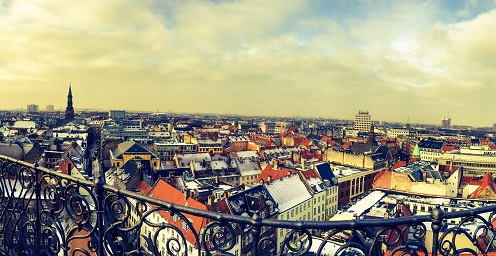GREEN CITY

A green city comprises sustainable systems as well as green areas for its citizens. Green cultivated areas and green nature areas can help to increase biodiversity in cities because new, cultivated areas can introduce crops that have not traditionally been a part of the urban environment, and can provide a richer animal and plant life. This benefits both the environment and the climate in the city.
Green facades purify the air in the city
The green city should also respond to some of the weather, climate and environmental issues that cities will face in the future, including increased rainwater volumes, temperature increases and air pollution - urban cultivation can help address these issues. Green facades and roofs can collect rainwater, help lower temperatures, clean the air and absorb CO2; collected rainwater can be cleaned and integrated as part of green cultivation areas.
In addition, urban parks can be utilised as places of commitment, well-being and opinion creation, and urban farming projects can help to develop cities that increasingly take human needs into account.
Would you like to get in touch with one of our urban farming experts?
Current research projects
- Interdisciplinary PhD Project on Urban Parks as Places of Co-operation, Multisensory Experiences and Nature Contact (IGN)
- Project on megacity and sponge city development in China/Asia focusing on water, nutrients and recycling (PLEN)
Project Proposals
- What is the value of an urban area?
- Make your city a green city
- Establishment of urban farming innovation networks
- Insect production as a citizen-inclusive activity
- Green rooftops as an element of a sustainable city
- How do we deal with soil and air pollution?
- How do we utilise urban water resources?
You can use Urban Farming SCIENCE to:
- Teaching, research and advisory services in the area of Urban Biodiversity
- Contribute to research on how green areas can be an element in urban planning
- Provide consultancy support for the development of green areas where citizens co-create nature
- Assist in the development of sustainable cities
- Advise and research in the interaction between green areas and sewage treatment
